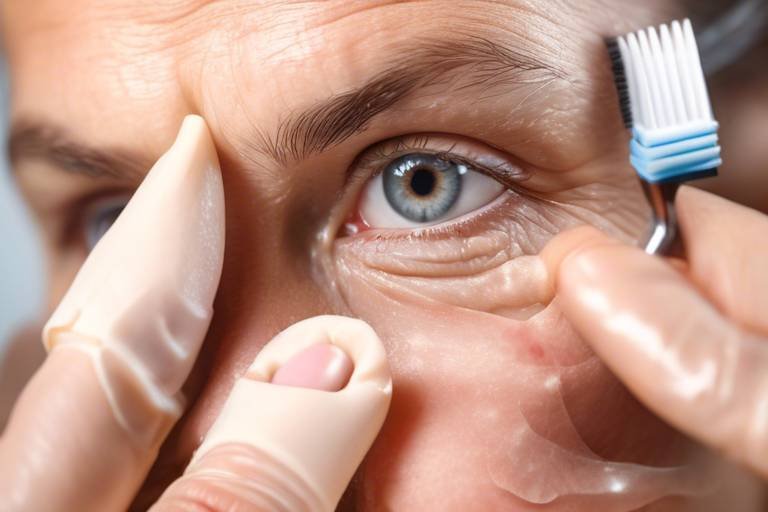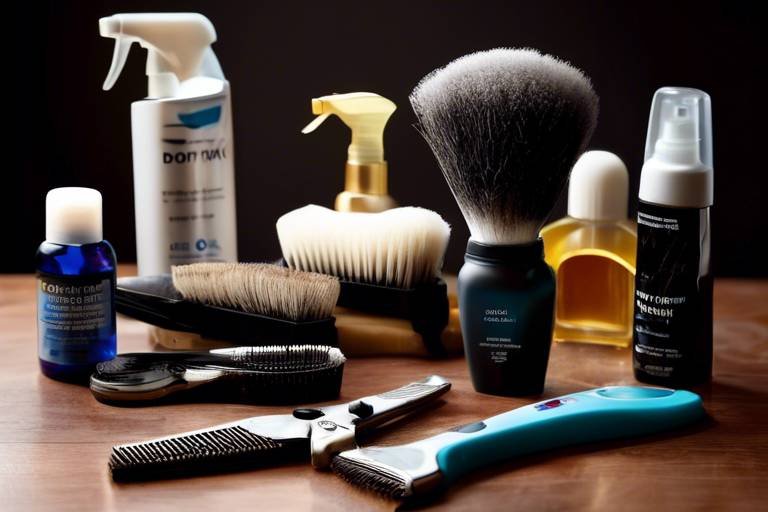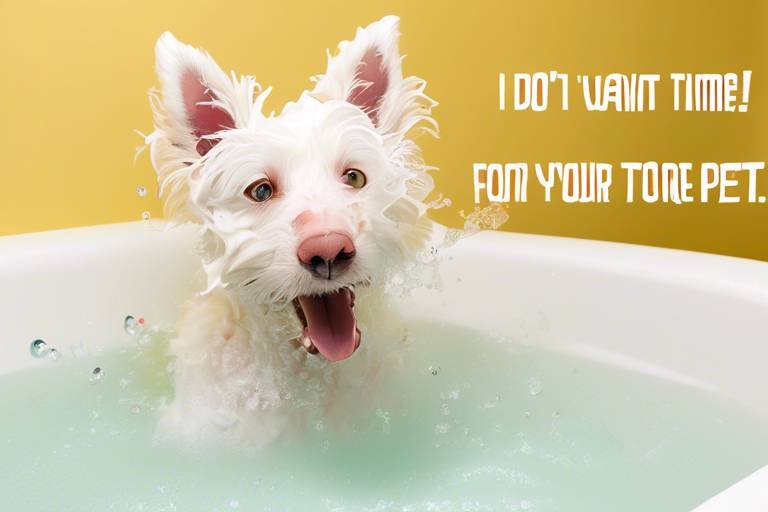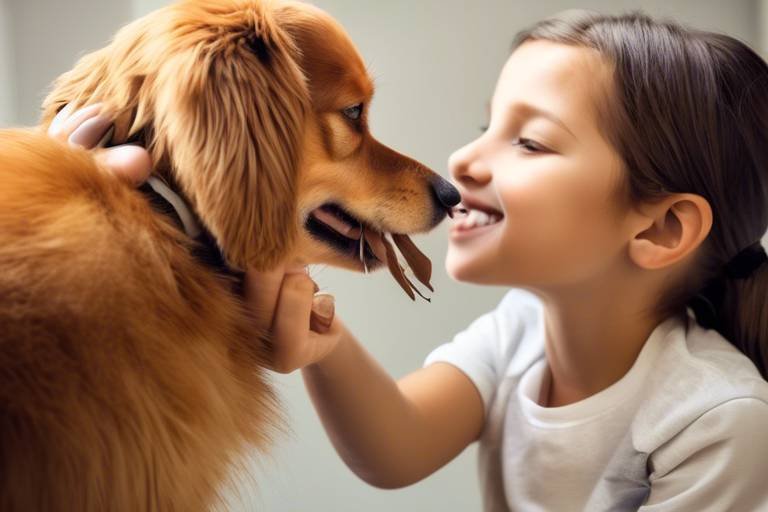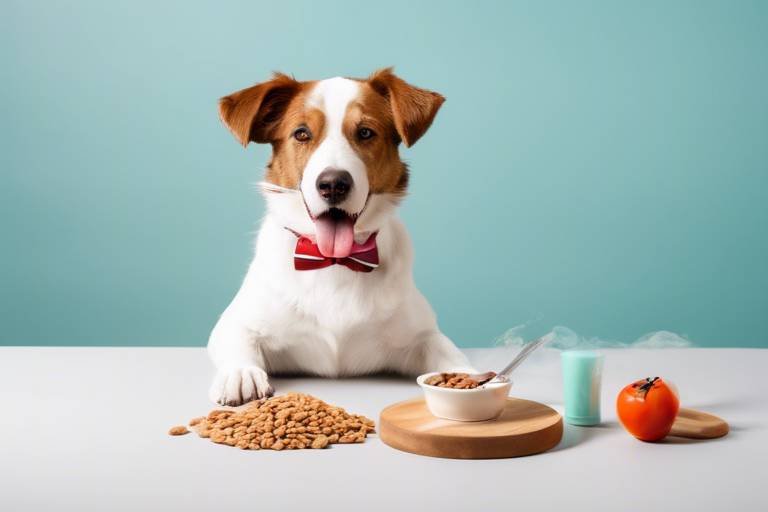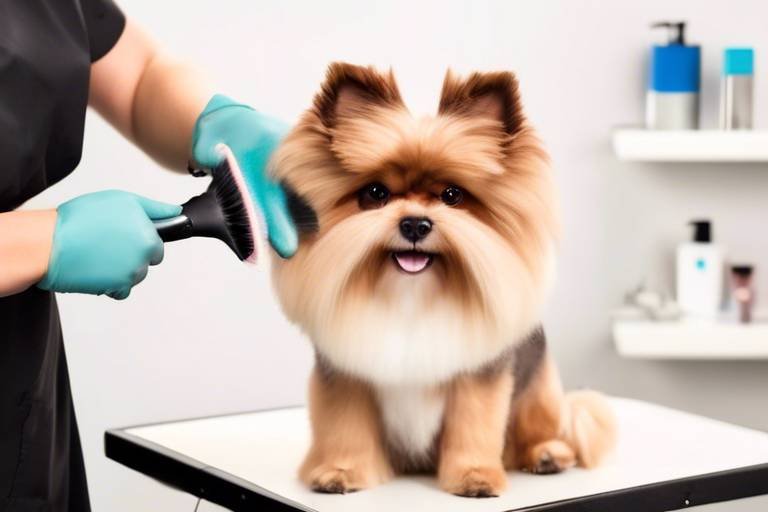How to Help Your Pet Adjust to a New Grooming Routine
Bringing a new grooming routine into your pet's life can feel like a daunting task, but it doesn't have to be! With a little understanding and preparation, you can transform grooming from a stressful chore into a bonding experience for both you and your furry friend. Imagine this: your pet, once anxious about the grooming process, now happily wagging their tail while you brush their coat. Sounds ideal, right? In this article, we will explore practical tips and insights that will help you create a positive grooming environment, ensuring that your pet not only tolerates but actually enjoys their grooming sessions.
Recognizing your pet's unique needs and preferences is crucial for a successful grooming routine. Just like humans, pets have their own personalities and comfort levels. Some might love the attention and the gentle strokes of a brush, while others may be more sensitive and require a softer approach. Start by observing your pet's reactions to different grooming tools and techniques. Are they more relaxed with a soft brush or do they prefer a comb? Do they flinch when you touch certain areas? Understanding these nuances will help you tailor the grooming experience to suit your pet's needs.
Selecting appropriate grooming tools can make a significant difference in your pet's grooming experience. The right tools can turn a potentially stressful situation into a soothing one. For example, if your pet has a thick, long coat, a slicker brush might be your best friend, while short-haired pets may require a bristle brush. Here’s a quick guide:
| Coat Type | Recommended Tools |
|---|---|
| Long Hair | Slicker Brush, Wide-Toothed Comb |
| Short Hair | Bristle Brush, Rubber Grooming Mitt |
| Curly Hair | Pin Brush, Dematting Tool |
Choosing the right tools not only enhances the grooming experience but also helps maintain your pet's coat health.
Creating a consistent grooming schedule helps your pet adapt more easily. Just like with any other routine, pets thrive on predictability. Set aside specific times each week for grooming sessions. This will help your pet understand that grooming is a regular part of their life, reducing anxiety over time. Try to align these sessions with times when your pet is naturally calm, such as after a long walk or playtime. Consistency is key; the more routine you make it, the more comfortable your pet will become.
Gradual introduction to grooming can alleviate anxiety. Instead of diving straight into a full grooming session, start with short, gentle sessions focusing on one area at a time. For instance, you might begin by simply brushing your pet's back for a few minutes, then gradually work your way to their legs and belly. This slow approach helps your pet acclimate to the grooming tools and processes. Remember, patience is your best ally here; every small step counts!
Using positive reinforcement can significantly improve your pet's grooming experience. Think of it this way: just like we enjoy rewards for good behavior, pets do too! After each grooming session, reward your pet with a treat or some extra playtime. This not only reinforces good behavior but also creates a positive association with grooming. You might say, "Good boy!" or "What a great job!" while giving them a treat, making the experience more enjoyable.
It's important to be aware of your pet's stress signals during grooming. Some common signs of discomfort include:
- Whining or barking
- Trying to escape or hide
- Excessive panting
- Tail tucking or body stiffening
By recognizing these signs, you can adjust your approach or take a break to help your pet relax. Sometimes, a simple pause or a gentle pet can make all the difference.
Different breeds have varying grooming needs. For example, a Poodle requires regular professional grooming to maintain its coat, while a Beagle might only need occasional brushing. It’s vital to research your pet's breed-specific grooming requirements to ensure you're meeting their unique needs. This knowledge can save you a lot of time and stress in the long run.
Grooming can present challenges, from matting to fear of water. If your pet has a tendency to get mats, consider investing in a dematting tool or seeking advice from a professional groomer. For pets that are afraid of water, try using a damp cloth for cleaning instead of a full bath until they become more comfortable. Remember, every challenge has a solution; it just takes a bit of creativity and patience!
Sometimes, professional grooming assistance is necessary. If your pet is particularly anxious or if you’re struggling with a specific grooming task, don’t hesitate to consult a professional groomer. They have the experience and tools to handle even the most challenging grooming situations. Additionally, if you notice any skin issues or unusual behavior during grooming, it’s best to seek veterinary advice.
Q: How often should I groom my pet?
A: It depends on the breed and coat type. Long-haired breeds may need grooming several times a week, while short-haired breeds might only require grooming once a month.
Q: What if my pet doesn't like being groomed?
A: Start slowly and use positive reinforcement. Gradual introduction and patience can help your pet become more comfortable with grooming.
Q: Can I groom my pet at home?
A: Yes! With the right tools and techniques, you can groom your pet at home. Just make sure to research your pet's specific needs and take your time.
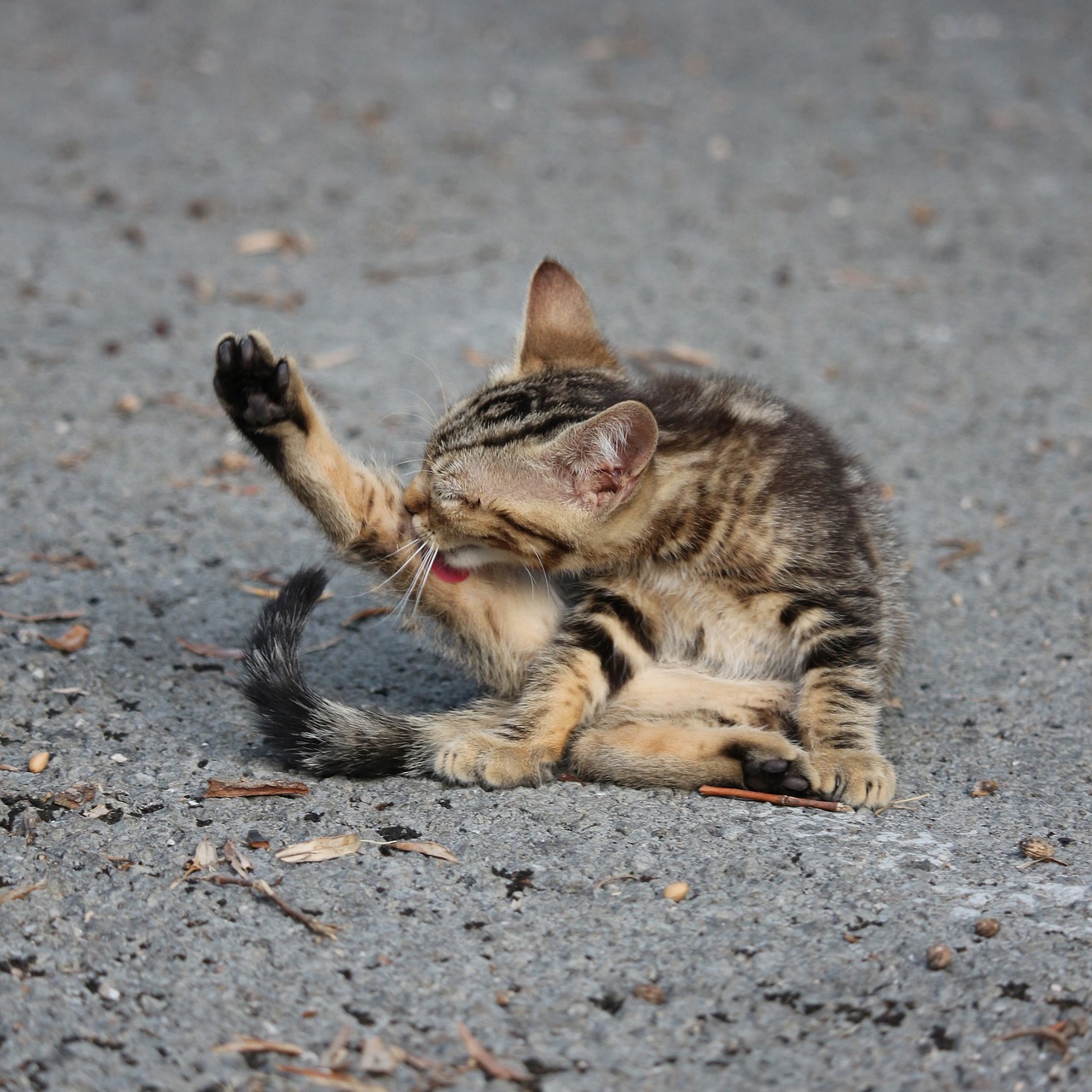
Understanding Your Pet's Needs
When it comes to grooming, one size certainly does not fit all. Just like humans have different hair types and preferences, your furry friend has their own unique grooming needs that must be understood and respected. Have you ever noticed how some pets seem to revel in the grooming process, while others might act like it's the end of the world? This difference often boils down to their individual personalities, past experiences, and even their breed characteristics. Taking the time to understand these factors can make all the difference in creating a successful grooming routine.
To start, consider your pet’s breed and coat type. For instance, long-haired breeds like Yorkshire Terriers or Persian Cats require more frequent grooming than short-haired breeds like Beagles or Boxers. Each coat type has its own specific maintenance requirements, which means that the tools and techniques you use should be tailored accordingly. A quick visit to your veterinarian or a local groomer can provide valuable insights into what your pet specifically needs.
Next, think about your pet's temperament. Is your dog a calm and collected soul, or are they a bundle of energy and nerves? Understanding their personality can help you gauge how they might react to grooming. For instance, a timid pet may need a more gentle approach, while a confident one might be more amenable to handling. Pay attention to their body language; a wagging tail might indicate excitement, while a tucked tail could signal fear. Observing these cues will help you adjust your grooming techniques to better suit your pet.
Another crucial aspect is to consider your pet's past experiences with grooming. If they’ve had a negative experience, such as a painful matting incident or a scary visit to the groomer, they may be more resistant to grooming in the future. In such cases, patience is key. You might want to start with short, positive grooming sessions that gradually build their comfort level. Incorporating familiar scents or toys during grooming can also create a more relaxing environment.
Lastly, don't forget about your pet's health needs. Regular grooming is not just about aesthetics; it also plays a vital role in your pet’s overall health. For example, regular brushing helps to remove loose fur and dirt, preventing skin irritations and infections. If your pet has specific health concerns, such as allergies or skin conditions, consult your veterinarian for tailored grooming advice. They can recommend hypoallergenic grooming products that will keep your pet looking good while ensuring their skin stays healthy.
In summary, understanding your pet's grooming needs requires a combination of knowledge about their breed, awareness of their personality, consideration of their past experiences, and attention to their health. By taking these factors into account, you can create a grooming routine that not only meets their needs but also strengthens the bond between you and your furry friend. Remember, a happy pet makes for a happy grooming experience!
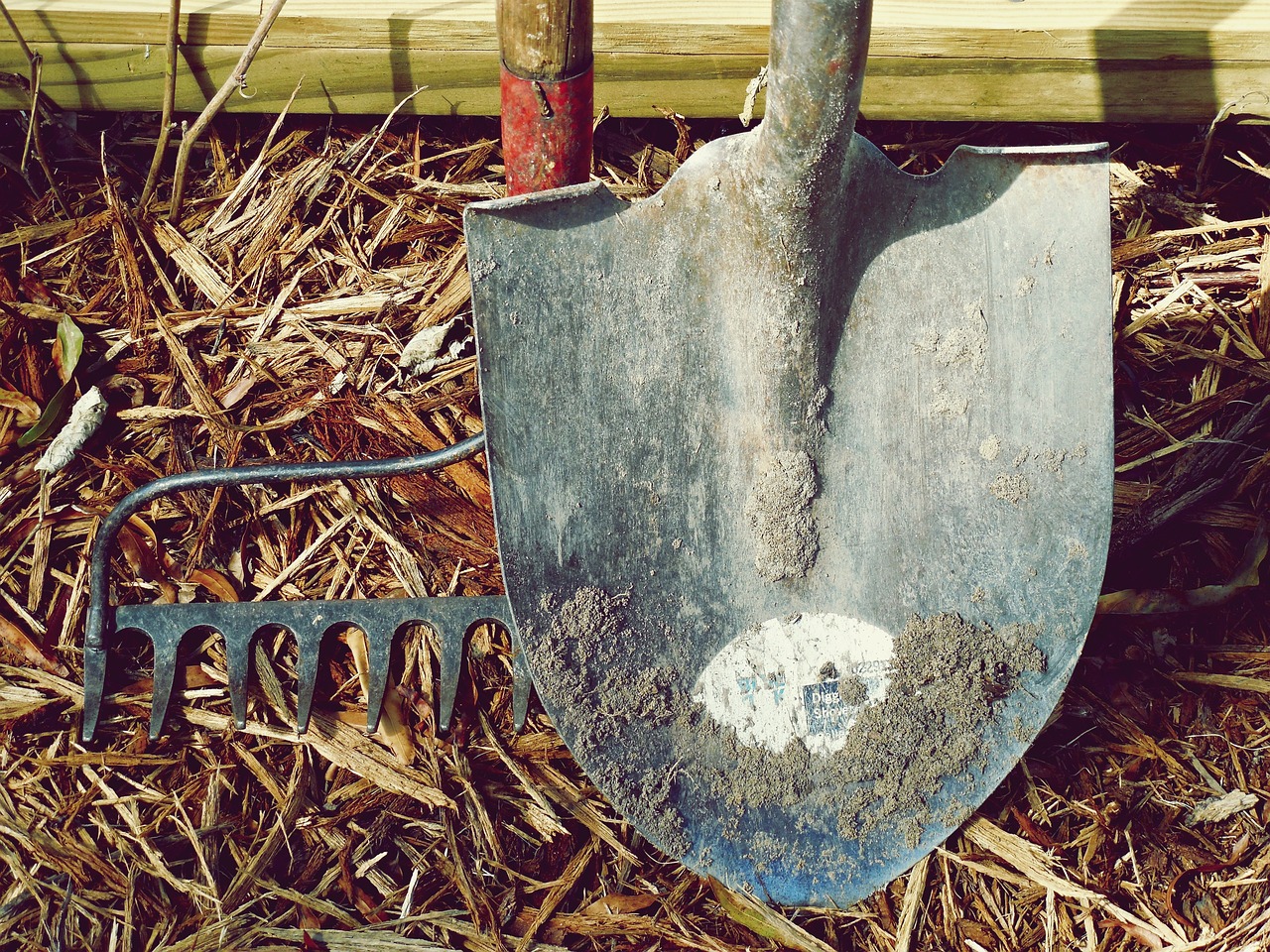
Choosing the Right Grooming Tools
When it comes to grooming your pet, choosing the right tools is akin to a chef selecting the best knives for their kitchen. The right grooming tools can make the difference between a pleasant experience and a chaotic one. Imagine trying to cut vegetables with a dull knife; it’s frustrating and ineffective. Similarly, using the wrong grooming tools can lead to discomfort for your furry friend and stress for you. So, how do you navigate the sea of grooming tools available on the market? Let’s dive in!
First and foremost, it's essential to consider your pet’s specific coat type. Different breeds have unique grooming requirements, and the tools you choose should cater to those needs. For example, long-haired breeds like the Yorkshire Terrier or Persian cat require different brushes compared to short-haired breeds like the Beagle or Boxer. Long-haired pets benefit from tools like slicker brushes and wide-toothed combs to prevent matting, while short-haired pets often do well with rubber grooming mitts or bristle brushes that remove loose fur effectively.
Here’s a quick overview of some common grooming tools and their ideal uses:
| Tool | Best For |
|---|---|
| Slicker Brush | Long-haired breeds, removes tangles and mats |
| Undercoat Rake | Double-coated breeds, removes loose undercoat |
| Deshedding Tool | Short-haired breeds, reduces shedding |
| Grooming Mitt | Short-haired breeds, gentle and easy to use |
| Clippers | All breeds, for trimming and styling |
Once you’ve identified the right tools for your pet, it’s time to consider the quality of those tools. Investing in high-quality grooming tools can save you money in the long run, as they’ll last longer and perform better than cheaper alternatives. Think of it like buying a good pair of shoes; while you might spend a bit more upfront, the comfort and durability are worth it. Look for tools that are ergonomic, easy to clean, and made from durable materials. This will not only help you groom your pet more effectively but also make the process more enjoyable.
Another important factor to consider is your pet's comfort. Just as you wouldn’t want to use a tool that feels awkward or uncomfortable, your pet deserves the same consideration. Pay attention to how your pet reacts to different tools. If they seem anxious or uncomfortable with a particular brush, it might be worth trying a different one. For instance, some pets may prefer the gentle touch of a grooming mitt over a traditional brush. Observing your pet's reactions can guide you in selecting the best tools for their grooming experience.
In conclusion, choosing the right grooming tools is a vital step in creating a positive grooming routine for your pet. By understanding your pet’s coat type, investing in quality tools, and considering your pet's comfort, you can turn grooming from a dreaded chore into a bonding experience. So, equip yourself with the right tools, and get ready to pamper your furry friend!
Q: How often should I groom my pet?
A: The frequency of grooming depends on your pet's breed and coat type. Long-haired breeds may need daily grooming, while short-haired breeds might only need it once a week.
Q: Can I use human grooming tools on my pet?
A: It’s best to use grooming tools specifically designed for pets, as human tools may not be effective and could cause discomfort.
Q: What should I do if my pet is afraid of grooming?
A: Gradually introduce grooming tools and use positive reinforcement to help your pet associate grooming with positive experiences.
Q: When should I consider professional grooming?
A: If your pet has a complex coat type or if grooming becomes too challenging, it may be best to consult a professional groomer.

Establishing a Routine
Creating a consistent grooming routine is essential for helping your pet adjust to the process. Just like humans thrive on schedules, pets also feel more secure when they know what to expect. Establishing a routine can significantly reduce anxiety for both you and your furry friend, turning grooming from a daunting task into a bonding experience. So, how do you go about setting up this all-important routine? Let’s dive into some key strategies!
First and foremost, consider your pet's natural behavior and energy levels. For example, if your dog is a morning pup, try scheduling grooming sessions in the early hours when they are more relaxed and less rambunctious. On the other hand, if your cat tends to be more active in the evening, that might be the best time for grooming. Observing your pet’s habits can help you determine the ideal time for grooming.
Next, consistency is key! Aim to groom your pet at the same time each week. This not only helps your pet anticipate the grooming session but also makes it easier for you to remember. You might want to create a simple calendar or set reminders on your phone. For instance, if you decide on Wednesdays after dinner, mark it down and stick to it. Over time, your pet will start associating that time with grooming, making them more likely to cooperate.
Another important aspect of establishing a routine is to keep the sessions short and sweet, especially in the beginning. If your pet is new to grooming, you don’t want to overwhelm them. Start with just a few minutes of brushing or combing, gradually increasing the time as they become more comfortable. You can also break the grooming process into smaller tasks spread throughout the week. For example, one day you might focus on brushing, while another day could be dedicated to nail trimming. This approach keeps things manageable and less stressful.
Additionally, incorporating playtime or treats can make grooming something your pet looks forward to. After a successful grooming session, reward your pet with their favorite toy or a tasty treat. This positive reinforcement not only helps them associate grooming with good experiences but also strengthens the bond between you. Remember, grooming is not just about maintaining your pet’s appearance; it’s also an opportunity to connect and show them love.
Lastly, don’t forget to communicate with your pet throughout the grooming process. While they may not understand your words, your tone and body language can convey reassurance. Speak softly and encourage them with gentle strokes. If they seem uneasy, take a break and try again later. Being attentive to your pet’s feelings will go a long way in helping them adjust to their new grooming routine.
In summary, establishing a grooming routine involves understanding your pet's needs, being consistent, keeping sessions short, rewarding good behavior, and maintaining open communication. By following these steps, you can transform grooming from a stressful obligation into a delightful ritual that benefits both you and your pet.
- How often should I groom my pet? The frequency of grooming depends on your pet's breed, coat type, and activity level. Generally, long-haired breeds require more frequent grooming than short-haired ones.
- What tools do I need for grooming? Common grooming tools include brushes, combs, nail clippers, and shampoos. It's important to choose tools that are suitable for your pet's specific coat type.
- What if my pet is afraid of grooming? If your pet shows signs of fear, take it slow. Gradually introduce them to grooming tools and processes, and use positive reinforcement to encourage them.
- When should I seek professional grooming help? If you're unsure about how to groom your pet or if they have specific needs, it's best to consult a professional groomer.

Introducing Grooming Gradually
Introducing your pet to grooming can feel like a daunting task, but it doesn't have to be! Just like humans, pets can be sensitive to new experiences, and diving straight into a full grooming session can lead to anxiety and resistance. Instead, think of this process as a gentle journey rather than a race. Start by allowing your furry friend to explore the grooming tools in a relaxed environment. This could mean simply leaving the brush or clippers out for them to sniff and investigate. By doing this, you're not just introducing the tools; you're also creating a sense of familiarity.
Once your pet seems comfortable with the tools, you can begin to incorporate short grooming sessions into your routine. Start with just a few minutes of brushing or combing, and gradually increase the time as your pet becomes more accustomed to the sensation. Remember, the goal here is to make grooming a positive experience. If your pet shows signs of discomfort, such as pulling away or whining, take a step back and try again later. Patience is key! Think of it like teaching a child to ride a bike; you wouldn’t just shove them onto a two-wheeler and expect them to pedal away, right?
In addition to gradual exposure to the tools, you can also introduce grooming in a fun way by incorporating playtime. For instance, after a short brushing session, reward your pet with their favorite toy or a treat. This not only reinforces the idea that grooming is a good thing but also helps to build a positive association in your pet's mind. If your pet enjoys treats, consider using them as a reward during grooming sessions. You might say, “Look, buddy! A treat for being so brave!” This kind of encouragement can work wonders.
Another effective technique is to create a grooming routine that fits into your pet’s daily life. For instance, if your dog loves going for walks, you could groom them right after a walk when they are naturally more relaxed. This way, they associate grooming with a positive experience rather than just a chore. You could also play soothing music in the background to create a calming atmosphere. Just like a cozy coffee shop, the right ambiance can make a world of difference!
As you gradually introduce grooming, keep an eye on your pet’s body language. Signs of stress might include a tucked tail, flattened ears, or excessive licking. If you notice any of these signs, it’s essential to pause and reassure your pet. Sometimes, taking a break and returning to the grooming process later can make all the difference. Remember, the goal is to ensure that both you and your pet enjoy this time together!
In summary, introducing grooming gradually is about creating a positive experience for your pet. By allowing them to explore the tools, starting with short sessions, reinforcing good behavior with treats, and being mindful of their comfort levels, you can turn grooming into a bonding experience rather than a battle. Just like any new skill, it takes time and patience, but the rewards are well worth it!
- How long should I spend grooming my pet each session? Start with 5-10 minutes and gradually increase as your pet becomes more comfortable.
- What if my pet really hates being groomed? Try to identify the specific grooming tool or process they dislike and address it gradually.
- Can I use treats to help my pet with grooming? Yes! Using treats as rewards can help create a positive association with grooming.
- How can I tell if my pet is stressed during grooming? Look for signs like a tucked tail, whining, or trying to escape. If you see these, take a break.
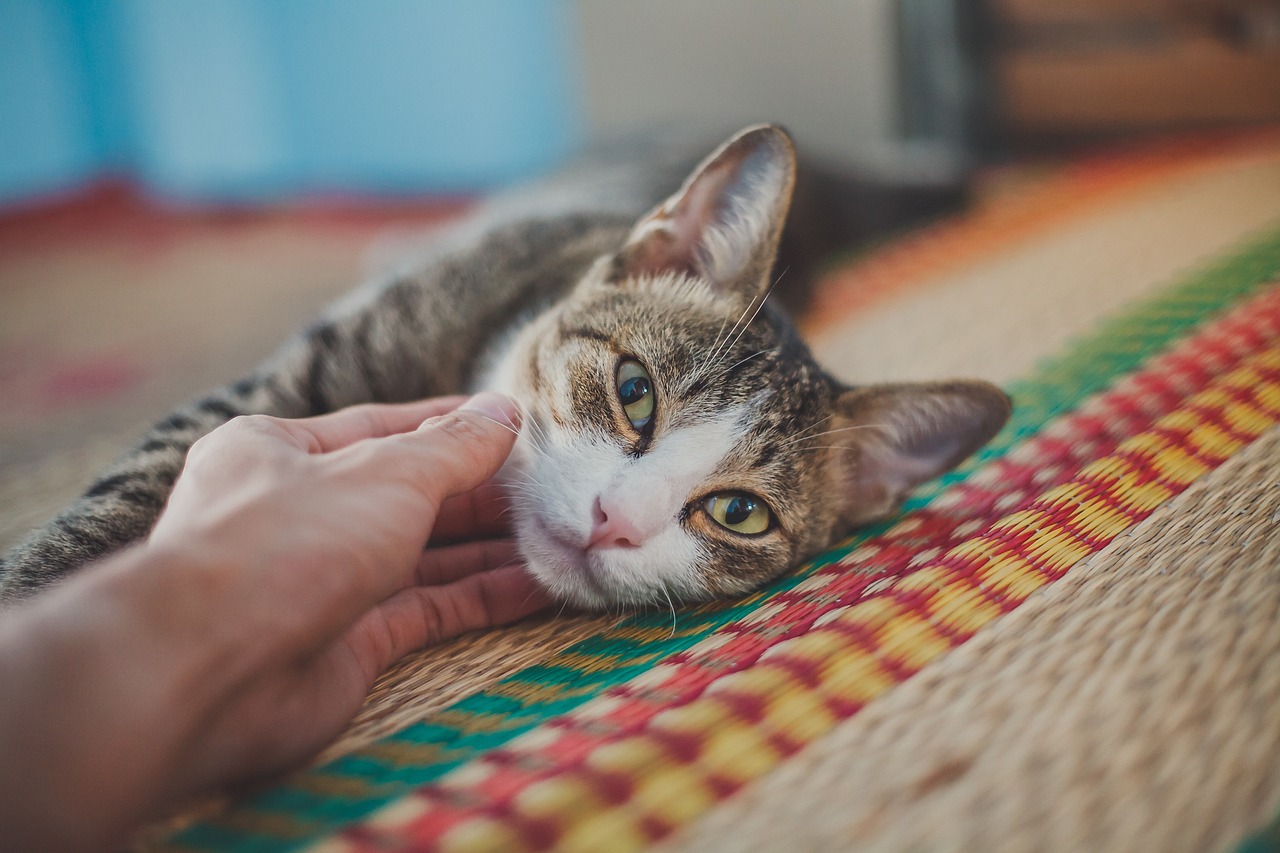
Positive Reinforcement Techniques
When it comes to grooming your furry friend, positive reinforcement can be a game changer. Imagine your pet’s face lighting up with joy every time they hear the click of a treat container or see their favorite toy. By associating grooming with something they love, you can transform what might be a stressful experience into a delightful one. This technique is all about rewarding your pet for good behavior, which encourages them to repeat those behaviors in the future. But how do you implement this effectively?
First, it's essential to choose the right rewards. Some pets may respond better to treats, while others might be more motivated by praise or playtime. Experiment with different rewards to see what makes your pet wag their tail or perk up their ears. For instance, if your dog loves a specific type of treat, use that as a reward during grooming sessions. On the other hand, if your cat enjoys a good scratch behind the ears, incorporate that into the routine.
Next, timing is everything. You want to reward your pet immediately after they exhibit the desired behavior, whether it’s sitting still while you brush their fur or allowing you to trim their nails. This immediate feedback helps your pet make the connection between their behavior and the reward. For example, if your dog stays calm while you groom them, praise them enthusiastically and offer a treat right away. This way, they’ll start to associate grooming with positive outcomes.
Additionally, you can use a technique called shaping. This involves breaking down the grooming process into smaller, manageable steps. Instead of expecting your pet to sit through an entire grooming session at once, start with just a few minutes of brushing. As they become more comfortable, gradually increase the duration. Each time they successfully complete a step, reward them! This approach not only builds their confidence but also reinforces the idea that grooming is a positive experience.
It's also important to keep the atmosphere relaxed. Consider playing soft music or using calming scents to create a soothing environment. Your pet can pick up on your emotions, so staying calm and cheerful will help them feel secure. If they seem anxious, take a break and offer some gentle affection or a favorite toy. Remember, the goal is to create a pleasant grooming routine that your pet looks forward to.
Lastly, consistency is key. Make grooming a regular part of your routine, and always use the same rewards and techniques. This consistency will help your pet feel more secure and understand what to expect. Over time, they’ll likely begin to associate grooming with fun and treats, making the process smoother for both of you.
In summary, using positive reinforcement techniques can significantly enhance your pet's grooming experience. By rewarding good behavior, timing your rewards effectively, breaking the process into manageable steps, maintaining a relaxed environment, and being consistent, you can help your furry friend embrace grooming with open paws!
Q: How long should I groom my pet at first?
A: Start with just a few minutes and gradually increase the time as your pet becomes more comfortable.
Q: What if my pet doesn't respond to treats?
A: Try different types of rewards, such as praise, playtime, or favorite toys, to see what motivates them best.
Q: How can I tell if my pet is stressed during grooming?
A: Look for signs such as panting, pacing, or trying to escape. If you notice these signs, take a break and comfort your pet.
Q: Is it necessary to groom my pet regularly?
A: Yes, regular grooming helps maintain your pet's coat health and can prevent issues like matting or skin irritations.
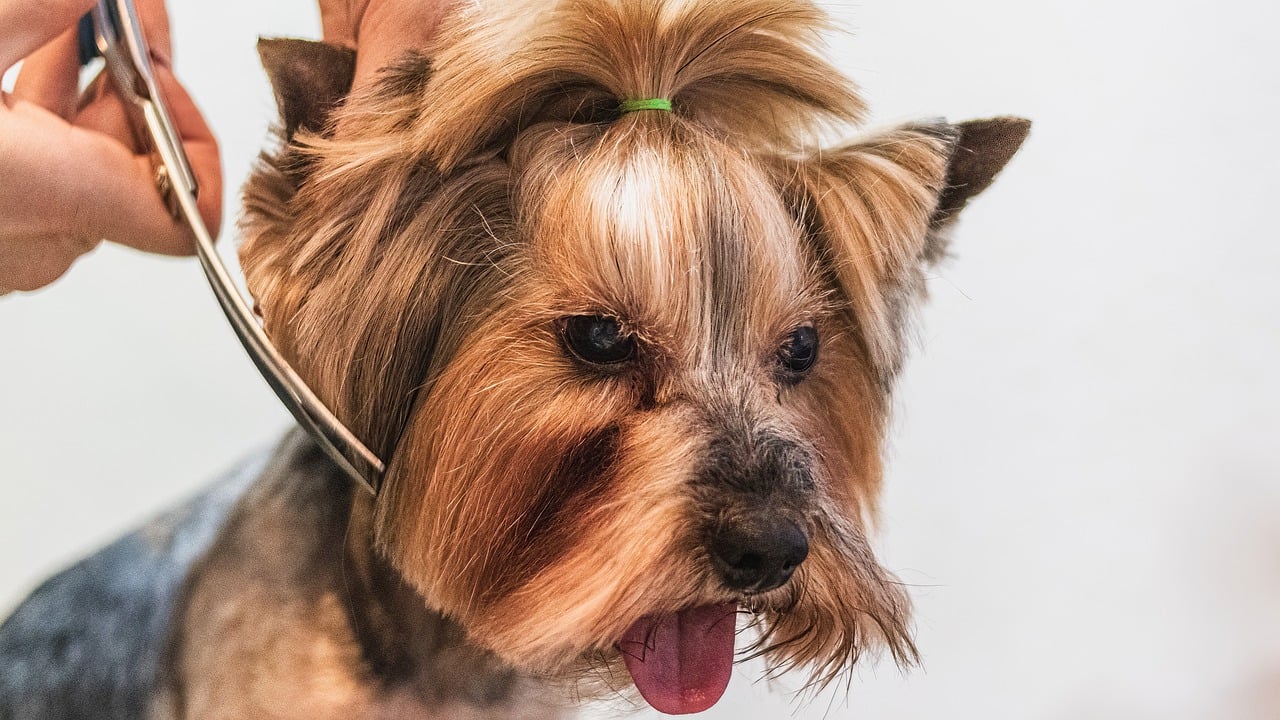
Recognizing Signs of Stress
When it comes to grooming your beloved pet, it’s essential to be vigilant about their emotional state. Just like us, pets can experience stress and anxiety, especially when faced with unfamiliar situations or routines. Recognizing the signs of stress can make a world of difference in ensuring a positive grooming experience. So, how do you know if your furry friend is feeling uneasy? Let’s dive into some common indicators.
First off, observe their body language closely. A pet that is stressed may exhibit behaviors such as:
- Excessive panting: If your pet is panting heavily, even when not exerting themselves, it might be a sign of discomfort.
- Tucked tail: A tail that’s tucked between the legs can indicate fear or anxiety.
- Vocalizations: Whining, growling, or excessive barking during grooming can signal distress.
- Avoidance behavior: If your pet tries to escape or hide, they might not be comfortable with the grooming process.
Additionally, keep an eye on their overall demeanor. A pet that is usually playful and energetic may become lethargic or withdrawn when stressed. Changes in appetite can also be a red flag; if your pet suddenly loses interest in their favorite treats or meals, it’s time to investigate further.
Another critical aspect to consider is their response to grooming tools. If your pet shows signs of fear, such as flinching or trying to bite the grooming brush, it’s clear they are not ready for that particular tool. Gradually introducing tools can help alleviate these fears over time.
Sometimes, stress can manifest in physical ways as well. Watch for signs like:
- Excessive shedding: If your pet is shedding more than usual, it could be a stress response.
- Skin irritations: Stress can lead to skin issues, including rashes or hot spots.
- Changes in bathroom habits: A stressed pet may have accidents in the house or exhibit changes in their normal bathroom routine.
Understanding these signs is crucial for creating a positive grooming experience. If you notice any of these stress signals, take a step back and assess the situation. Perhaps it’s time to slow down and give your pet a break, or consider a different approach to grooming that suits their needs better. Remember, grooming should be a bonding experience, not a source of fear.
Q: How can I tell if my pet is stressed during grooming?
A: Look for signs such as excessive panting, a tucked tail, vocalizations, avoidance behavior, and changes in appetite or energy levels.
Q: What should I do if my pet shows signs of stress?
A: If your pet is stressed, pause the grooming session. Allow them to relax and gradually reintroduce grooming tools and techniques at their pace.
Q: Are there specific breeds that are more prone to stress during grooming?
A: Yes, some breeds are more sensitive to grooming than others. It's essential to understand your pet's breed-specific needs and tailor your approach accordingly.
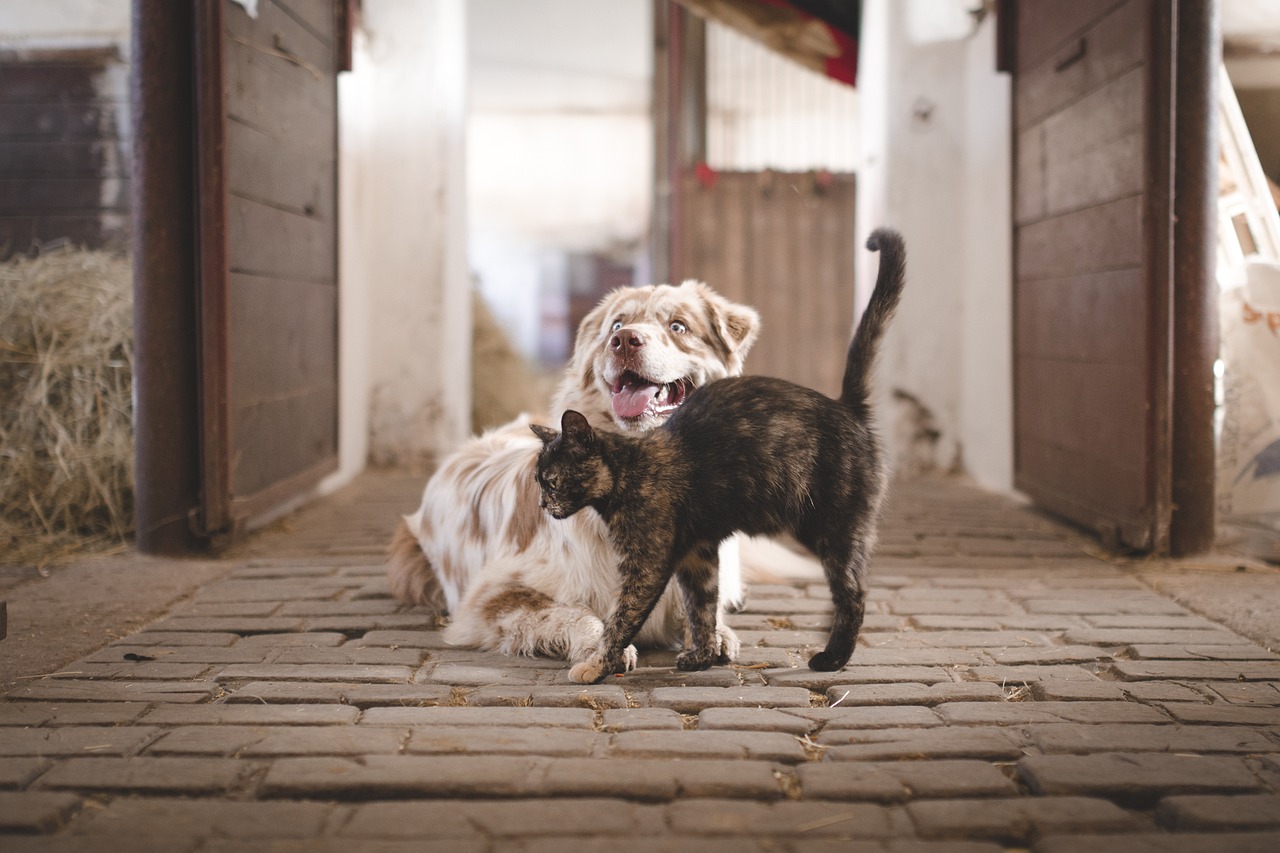
Grooming for Different Breeds
When it comes to grooming, one size definitely does not fit all! Just like humans, pets come in various shapes, sizes, and temperaments, and each breed has its own unique grooming requirements. Understanding these differences is essential to ensure your furry friend not only looks their best but also feels comfortable and happy throughout the grooming process.
For instance, long-haired breeds such as the Yorkshire Terrier or Maine Coon require regular brushing to prevent matting and tangles. A daily grooming routine can help keep their coats sleek and shiny. On the flip side, short-haired breeds like the Beagle or Boxer may only need a weekly brush to remove loose hair and keep their skin healthy. It's fascinating how different grooming needs can be, isn’t it?
Here’s a quick overview of some common breeds and their grooming needs:
| Breed | Coat Type | Grooming Frequency |
|---|---|---|
| Yorkshire Terrier | Long, silky coat | Daily |
| Maine Coon | Long, thick coat | 2-3 times a week |
| Beagle | Short, smooth coat | Weekly |
| Boxer | Short, tight coat | Weekly |
Now, let’s talk about some breeds that might be a bit more challenging. Breeds like the Poodle or Shih Tzu have curly coats that can trap dirt and debris, requiring regular grooming and even professional grooming sessions to maintain their appearance. It’s crucial to keep their coats clean and trimmed to avoid discomfort and skin issues.
Moreover, some breeds, such as the Golden Retriever, are prone to shedding and may require additional grooming during seasonal changes. You might find that during spring and fall, your Golden sheds more than usual, and a good brushing session can help manage this. Think of it as a mini workout for both you and your pet!
In addition to the coat type, temperament plays a significant role in grooming. Some dogs, like the Border Collie, may enjoy the grooming process and see it as an opportunity for bonding, while others might be more anxious. For anxious pets, it’s important to approach grooming gently and patiently, ensuring they associate it with positive experiences. Have you ever noticed how a little love and patience can transform a stressful situation into a pleasant one?
Ultimately, understanding your pet's breed-specific grooming needs will not only help keep them looking great but also promote their overall health and well-being. So, whether your pet is a fluffy Pomeranian or a sleek Doberman, tailoring your grooming routine to fit their unique requirements is the key to a happy and healthy pet!
- How often should I groom my pet? - It depends on the breed and coat type. Long-haired breeds generally need more frequent grooming than short-haired ones.
- Can I groom my pet at home? - Yes! Many grooming tasks can be done at home, but some breeds may benefit from professional grooming.
- What should I do if my pet is anxious during grooming? - Gradually introduce grooming tools and techniques, and use positive reinforcement to create a calm environment.

Dealing with Common Grooming Challenges
Grooming your pet can sometimes feel like navigating a minefield, right? You may encounter a variety of challenges that can turn what should be a pleasant bonding experience into a stressful ordeal. From dealing with stubborn mats to pets that absolutely detest water, these common grooming challenges can leave you feeling frustrated and unsure. But fear not! With a little knowledge and some handy tips, you can tackle these issues head-on and make grooming a breeze.
One of the most prevalent issues pet owners face is matting. This is especially common in long-haired breeds like the Maltese or the Shih Tzu. Mats can form due to a lack of regular grooming, dirt, or even just the natural oils in your pet's coat. To combat this, you should make it a habit to brush your pet's fur regularly. Using the right tools, such as a dematting comb or slicker brush, can help you gently remove these tangles without causing discomfort. Remember, patience is key! If your pet is particularly sensitive, consider breaking the process into smaller sessions to avoid overwhelming them.
Another challenge many pet owners encounter is the fear of water. Some pets have a natural aversion to baths, which can lead to a chaotic situation when it’s time for cleaning. To help your furry friend become more comfortable with water, try introducing them to the bath in a calm environment. Use a shallow basin or even a damp cloth to start. Let them explore the water at their own pace, and gradually introduce the idea of getting wet. You might even want to use a handheld showerhead on a gentle setting, as this can feel less intimidating than a full tub.
Sometimes, grooming can trigger a fear response in pets, leading to anxiety and stress. It's essential to recognize that your pet may not enjoy the process as much as you do. To alleviate anxiety, consider creating a soothing environment. Play soft music, use treats, or even try aromatherapy with pet-safe essential oils to create a calm atmosphere. By making grooming sessions feel more like a treat and less like a chore, you can help your pet associate grooming with positive experiences.
In addition to these challenges, some pets may exhibit aggressive behavior during grooming. If your pet is nipping or growling, it’s crucial to take a step back and reassess the situation. Always prioritize safety for both you and your pet. If your pet is too stressed or aggressive, it might be best to halt the grooming session and try again later. In some cases, consulting a professional groomer or a veterinarian may be necessary to address behavioral issues effectively.
Lastly, don’t forget about the importance of regular check-ups with your vet. Sometimes, underlying health issues can contribute to grooming challenges. For instance, skin conditions or ear infections can make grooming painful for your pet. Keeping up with veterinary visits ensures that your furry friend is healthy and can help you identify any potential issues before they become significant problems.
In summary, while grooming can present various challenges, being aware of these common issues and having a plan in place can make a world of difference. With patience, the right tools, and a gentle approach, you can transform grooming from a dreaded task into an enjoyable bonding experience for both you and your pet. Remember, every pet is unique, and what works for one may not work for another, so don’t hesitate to experiment until you find the perfect grooming routine for your furry companion.
- How often should I groom my pet? The frequency of grooming depends on your pet's breed and coat type. Long-haired breeds may require daily grooming, while short-haired pets might only need it weekly.
- What should I do if my pet hates grooming? Gradually introduce grooming tools and sessions, using treats and positive reinforcement to create a positive association.
- When should I seek professional grooming help? If your pet has severe matting, anxiety issues, or if you’re unsure how to handle a specific grooming task, it’s best to consult a professional groomer.
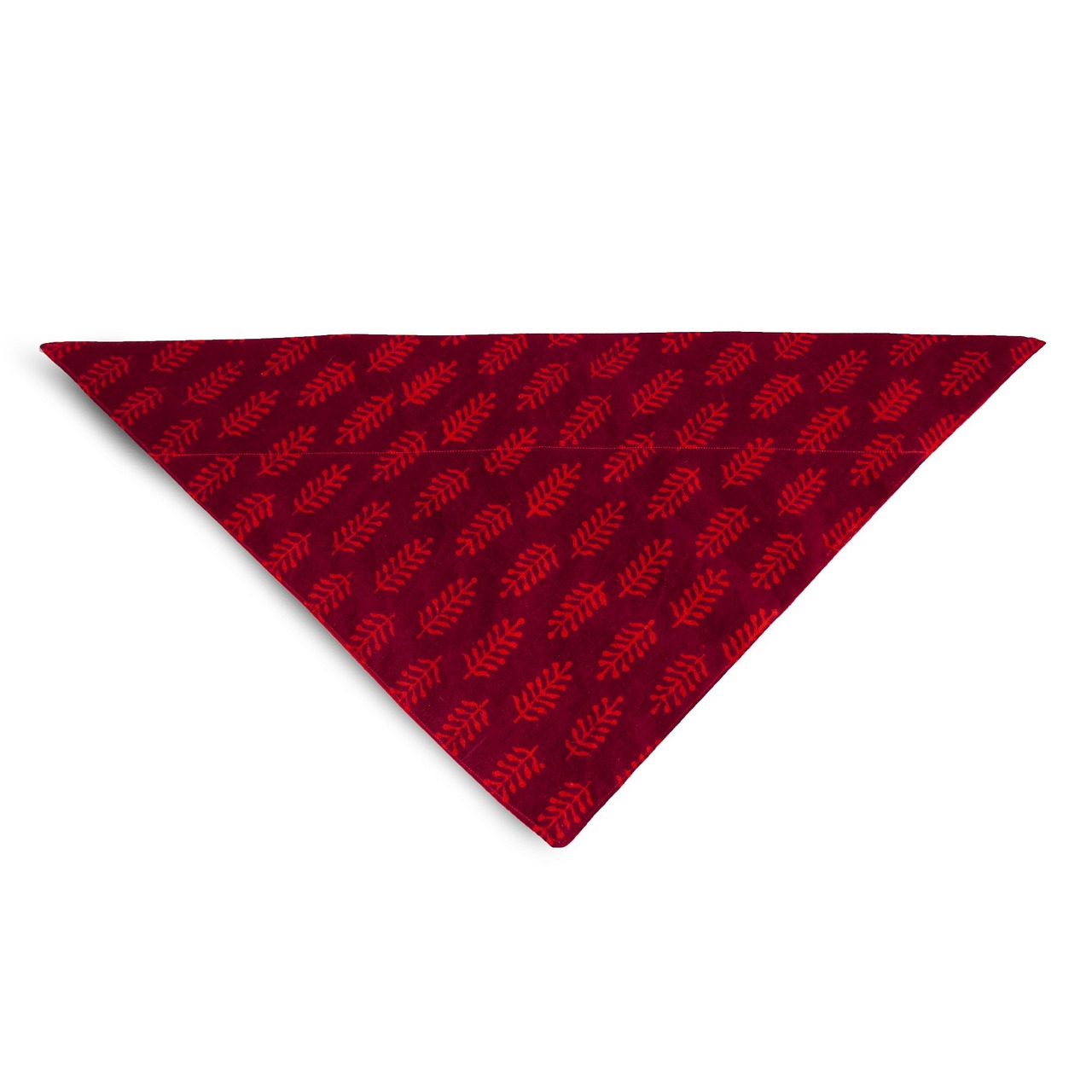
When to Seek Professional Help
As a pet owner, you might feel confident in your ability to groom your furry friend at home. However, there are certain situations where seeking professional help is not just advisable but necessary. Grooming isn’t just about aesthetics; it plays a crucial role in your pet's health and well-being. So, when should you consider calling in the experts?
First and foremost, if your pet has a specific health issue or condition, it's essential to consult a professional groomer. Conditions like skin infections, allergies, or wounds can require specialized care that you may not be equipped to handle. Professional groomers are trained to recognize these issues and can provide the gentle care your pet needs. For instance, if your dog has a skin condition, a groomer can use the right products and techniques to ensure the grooming process doesn’t exacerbate the problem.
Another scenario to consider is if your pet has a thick or matted coat. Some breeds, like the Poodle or the Shih Tzu, are prone to matting, which can be painful for your pet if not handled properly. Attempting to detangle these mats at home can lead to cuts or further matting. A professional groomer has the right tools and experience to safely remove mats without causing discomfort to your pet.
Additionally, if your pet exhibits extreme fear or aggression during grooming sessions, it might be time to seek professional assistance. Grooming should be a positive experience, and if your pet is constantly stressed or fearful, a professional can help by using techniques that are more effective in calming anxious pets. They often have a knack for handling nervous animals and can create a more relaxing environment.
Moreover, if you're considering a significant change in your pet’s grooming routine—like a new hairstyle or a complete shave—it’s wise to consult a professional. They can provide valuable advice on what styles will suit your pet's breed and personality while ensuring that the process is safe and comfortable. Remember, not all grooming styles are suitable for every breed, and a professional can guide you through these choices.
Lastly, if you find yourself overwhelmed by the grooming process or simply lack the time to commit to a regular grooming schedule, hiring a professional can alleviate that stress. Many groomers offer package deals that include everything from bathing to nail trimming, making it a convenient option for busy pet owners. Investing in professional grooming can save you time and ensure your pet looks and feels their best.
In summary, while grooming your pet at home can be a rewarding experience, recognizing when to seek professional help is vital. Whether it’s due to health concerns, coat issues, behavioral problems, or just a lack of time, professionals can provide the expertise and care that your pet deserves.
- How often should I take my pet to a professional groomer? - This depends on your pet's breed and coat type. Generally, every 4-6 weeks is recommended for long-haired breeds, while short-haired breeds may only need grooming every 8-12 weeks.
- Can I still groom my pet at home if I take them to a professional? - Absolutely! Regular brushing and maintenance at home can help your pet feel more comfortable during professional grooming sessions.
- What should I look for in a professional groomer? - Look for a groomer with experience, positive reviews, and a facility that is clean and safe. It's also helpful if they have experience with your specific breed.
- What if my pet doesn't like going to the groomer? - Discuss your pet's behavior with the groomer. They can often provide tips to help ease your pet's anxiety, such as allowing you to stay during the grooming process.
Frequently Asked Questions
- How can I tell if my pet is comfortable with grooming?
Observing your pet's body language is key! Signs of comfort include relaxed ears, a wagging tail, and a calm demeanor. If they seem tense, with flattened ears or a stiff body, it might be time to slow down and reassess your approach.
- What grooming tools are best for my pet's coat type?
Choosing the right tools can make all the difference! For short-haired pets, a rubber brush or a bristle brush works well. Long-haired breeds often benefit from a slicker brush or a comb. Always consider your pet's specific needs and consult with a vet if unsure.
- How often should I groom my pet?
Frequency depends on the breed and coat type. Generally, short-haired pets may need grooming every few weeks, while long-haired pets might require weekly sessions to prevent matting. Establish a routine that works for both you and your furry friend!
- What are some effective ways to introduce grooming gradually?
Start by letting your pet sniff the grooming tools and get used to their presence. Gradually introduce brushing sessions, beginning with just a few minutes at a time. This way, your pet can acclimate without feeling overwhelmed!
- How can I use positive reinforcement during grooming?
Positive reinforcement is a game changer! Reward your pet with treats, praise, or playtime whenever they remain calm during grooming. This builds a positive association, making them more likely to enjoy the process in the future.
- What signs indicate my pet is stressed during grooming?
Watch for signs like whining, growling, or attempts to escape. Other indicators include excessive panting or licking their lips. If you notice these signs, take a break and reassure your pet to help them relax.
- Are there specific grooming tips for different breeds?
Absolutely! Each breed has unique grooming needs. For example, poodles require regular clipping, while bulldogs need less frequent grooming but benefit from skin folds cleaning. Research your breed's specific requirements to keep them looking and feeling their best!
- How do I handle common grooming challenges like matting?
Dealing with mats can be tough! Start by using a dematting tool or a slicker brush, working gently to avoid hurting your pet. If mats are severe, consider seeking professional help to prevent skin issues.
- When should I consider taking my pet to a professional groomer?
If you're facing challenges that seem beyond your expertise, or if your pet has specific grooming needs that require special tools or techniques, don't hesitate to consult a professional. They can provide the care your pet deserves!







